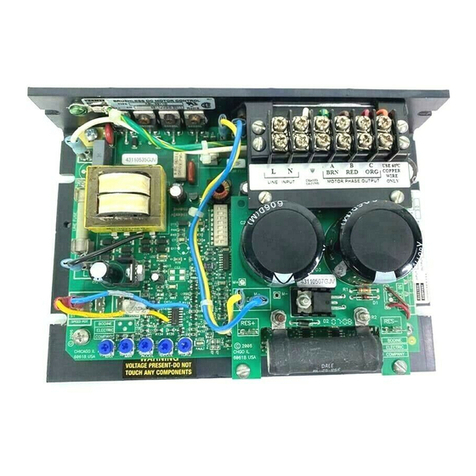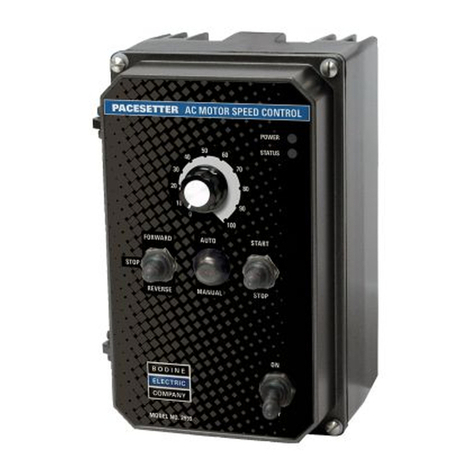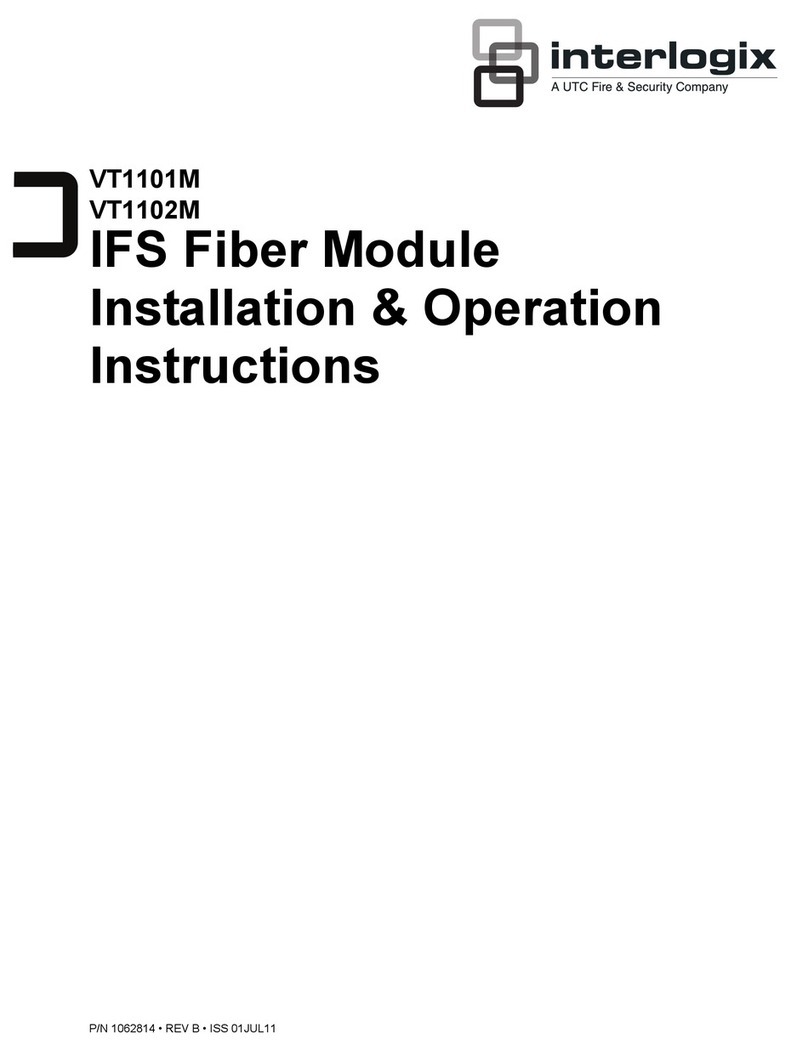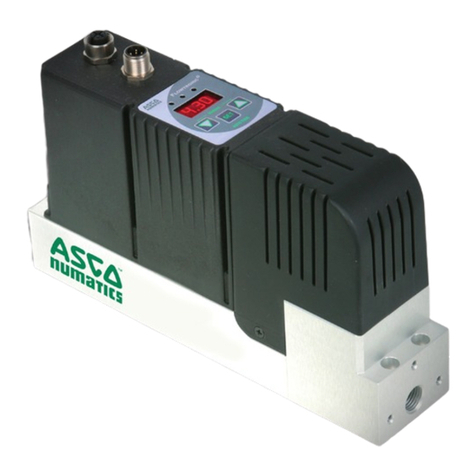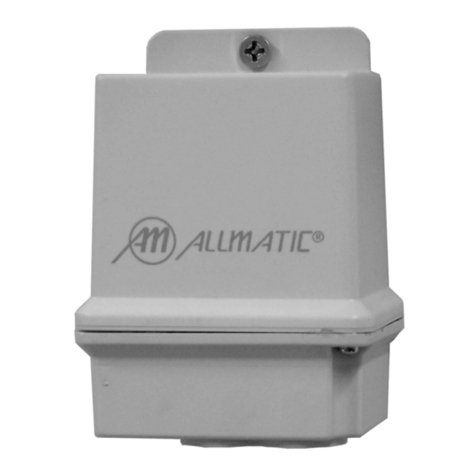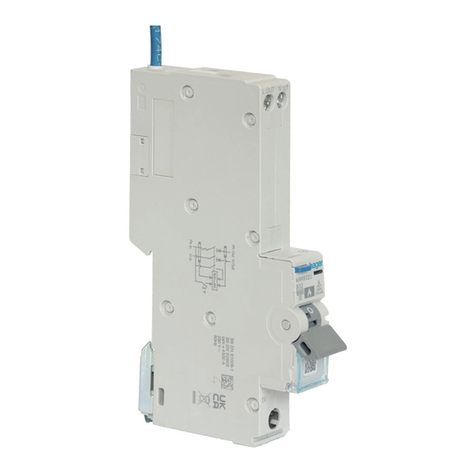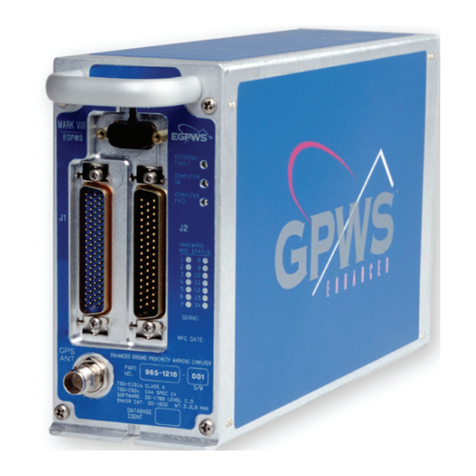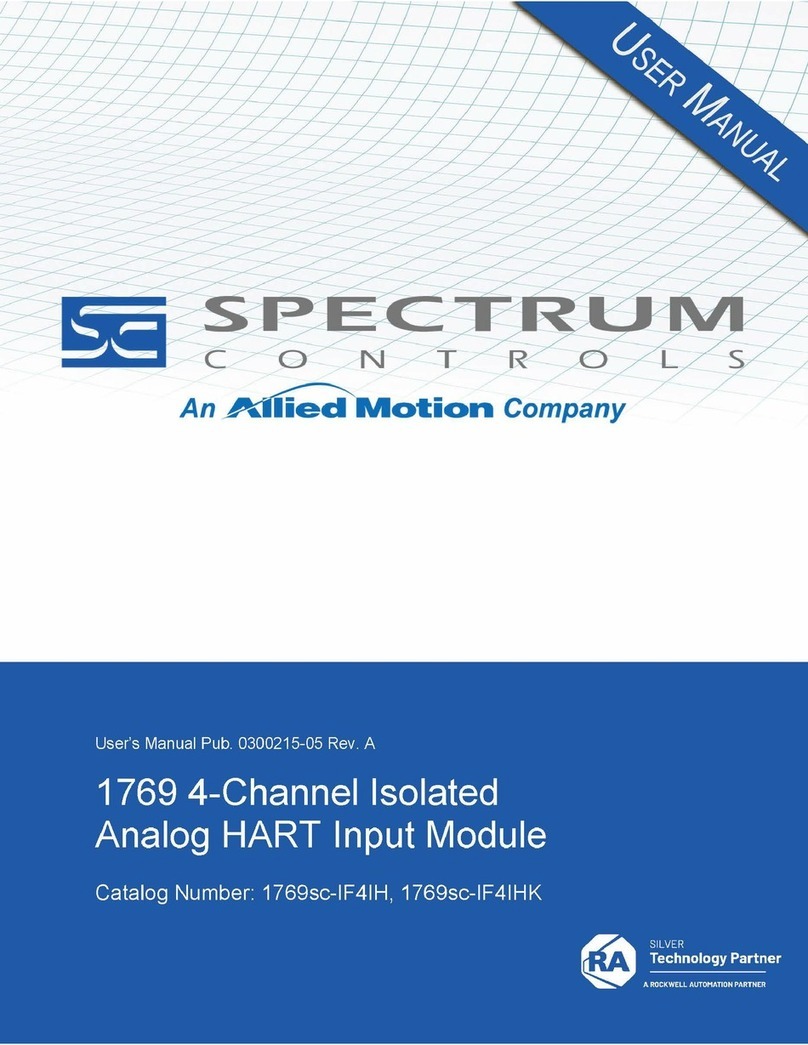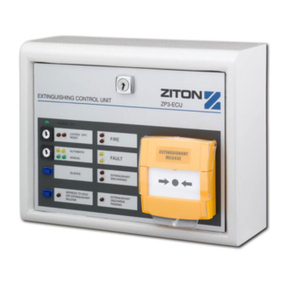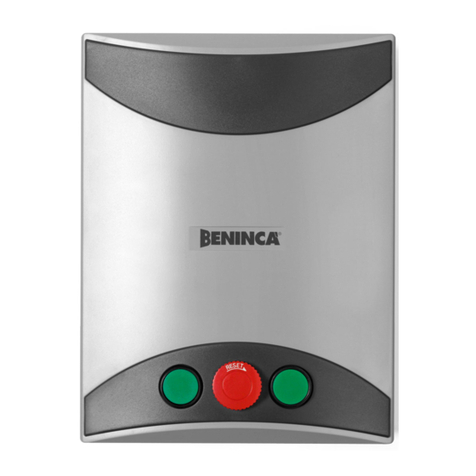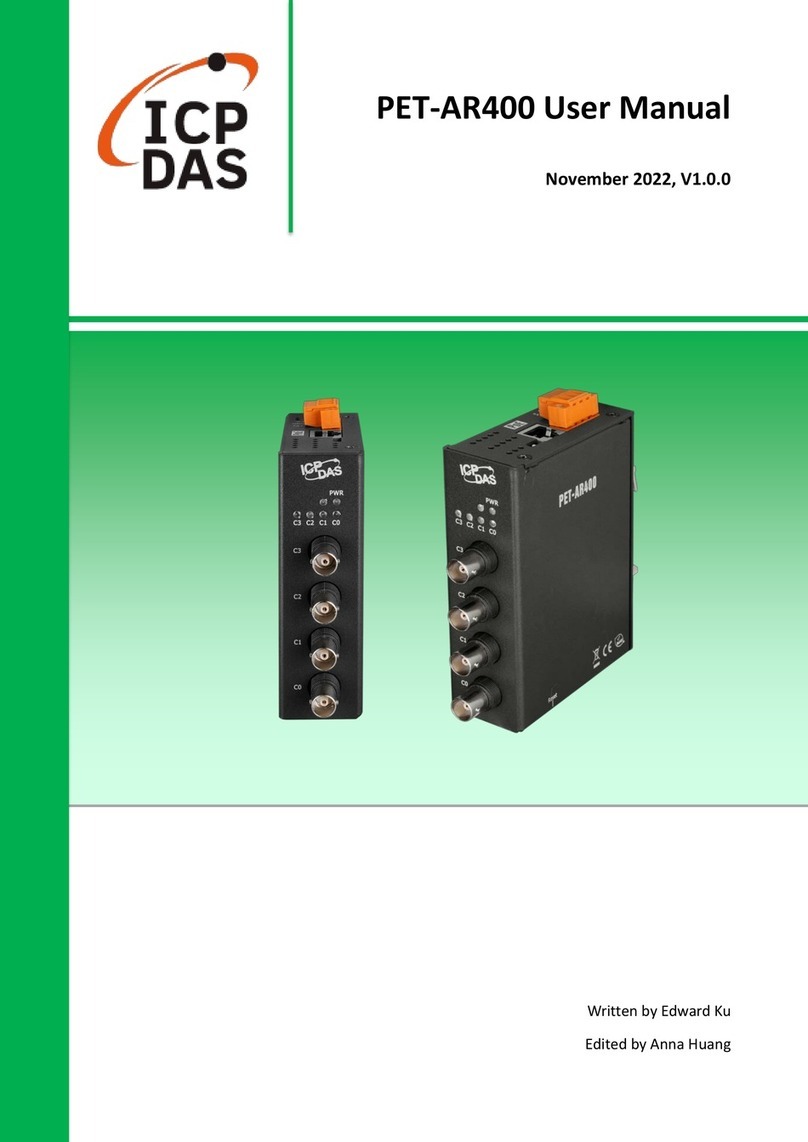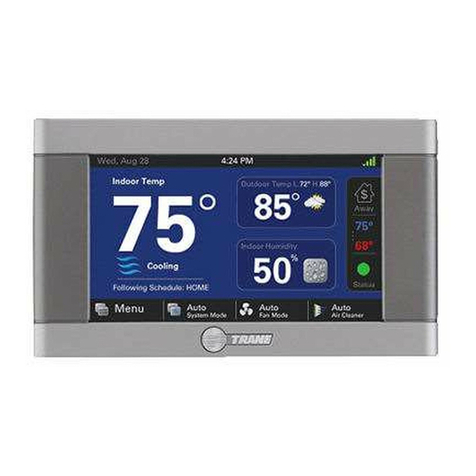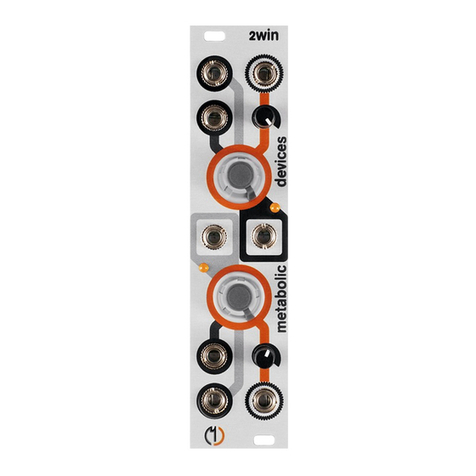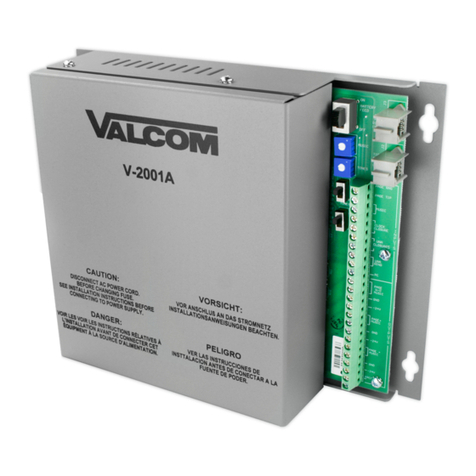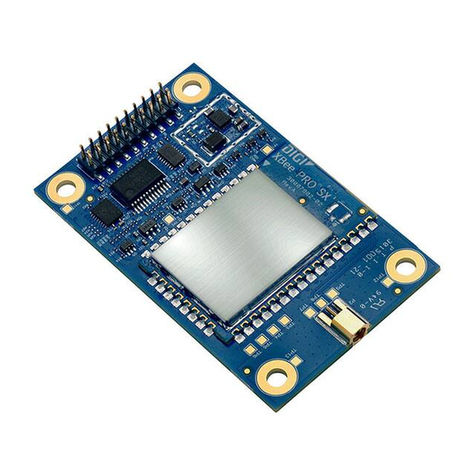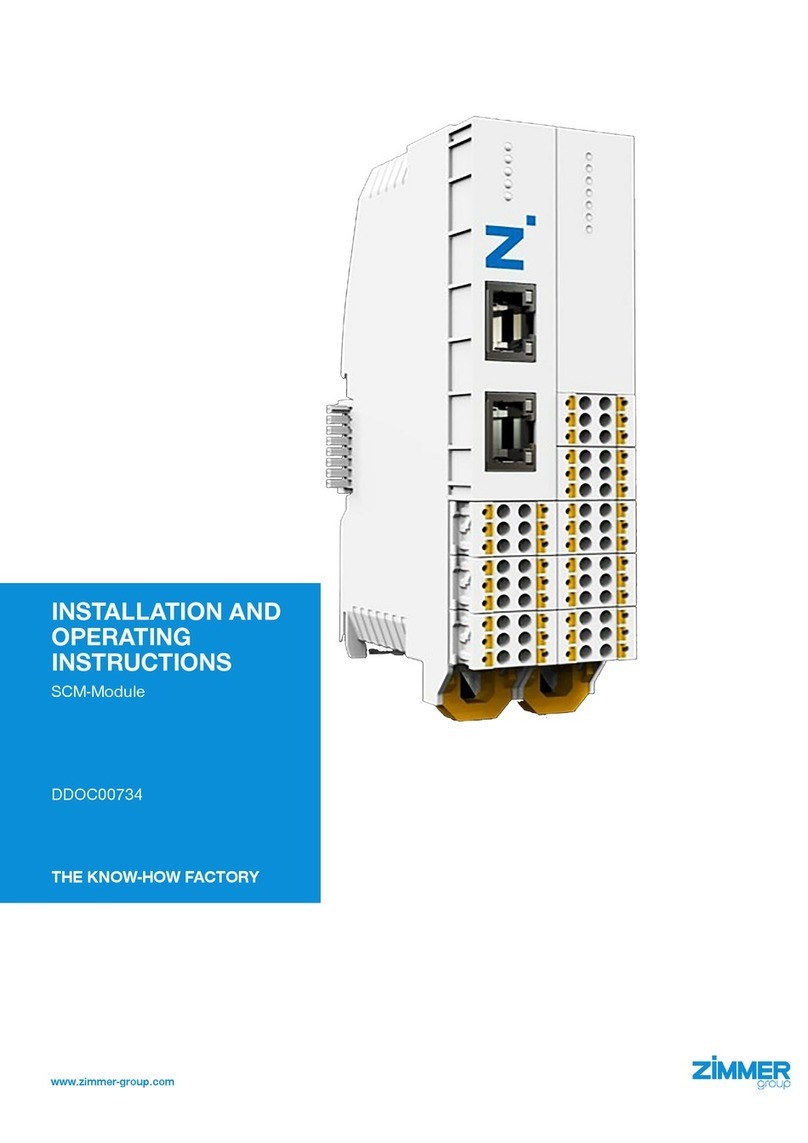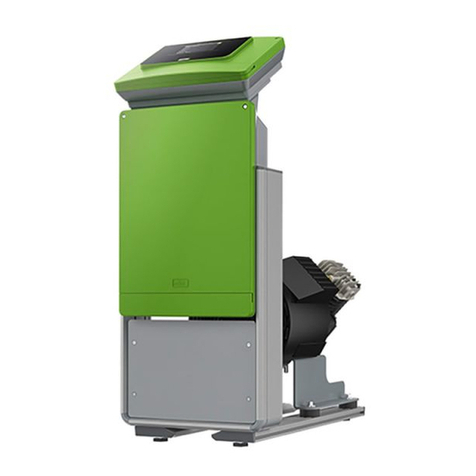Bodine BLCD-20B User manual

READ AND FOLLOW ALL SAFETY INSTRUCTIONS
! IMPORTANT SAFEGUARDS ! WHEN USING ELECTRICAL EQUIPMENT, BASIC
SAFETY PRECAUTIONS SHOULD ALWAYS BE
FOLLOWED, INCLUDING THE FOLLOWING:
SAVE THESE INSTRUCTIONS
Bodine © 2018 Signify Holding. All rights reserved.
236 Mt. Pleasant Rd. • Collierville, TN USA 38017-2752 • Tech Support 888-263-4638 • Fax 901-853-5009 • www.bodine.com
81000108
EMERGENCY LIGHTING CONTROL UNIT
Installation Instructions
1. Mount only to an approved electrical enclosure.
2. Do not use near gas or electric heaters.
3. Equipment should be mounted in locations and at heights where it will not readily be subjected to
tampering by unauthorized personnel.
4. Use of accessory equipment not recommended by the manufacturer may cause an unsafe condition.
5. Do not use this equipment for other than intended use.
6. Ambient temperature range is 32 - 122ºF (0º- 50ºC); Relative humidity range is 5 to 95%, noncondensing.
7. Maximum permitted load - Ballast : 20A @ 120/277 VAC, 50/60 Hz
LED Driver : 20A @ 120/277 VAC, 50/60 Hz
Incandescent: 10A @ 120 VAC, 50/60 Hz
BLCD-20B
03/06/19
DESCRIPTION
The BLCD-20B works in conjunction with an auxiliary generator or central inverter system. The unit allows lighting
control devices for normal lighting to also control emergency lighting installed within the area. The BLCD-20B is
designed for lighting control in areas where emergency lighting fixtures are connected on dedicated emergency light-
ing circuits that are typically ON 24 hours per day. The BLCD-20B allows ON/OFF control of the emergency lighting
along with the normal room lighting to save energy. The intended operation of the BLCD-20B is to guarantee that
the emergency lighting is ON whenever normal power to the controlled circuit is interrupted. While normal power is
present, the BLCD-20B allows control of the emergency lighting by a device such as an occupancy sensor, a relay, a
dimmer, or a wall switch.
WARNING: TURN POWER OFF AT CIRCUIT BREAKER BEFORE INSTALLING. ONLY QUALIFIED
ELECTRICIANS SHOULD INSTALL THE BLCD20B.
SERVICE BY QUALIFIED PERSONNEL ONLY
FOR GENERATOR OR CENTRAL INVERTER SUPPLIED LIGHTING

INSTALLATION
2
WIRING REFERENCE TABLE
AWG/COLOR
Emergency Power In 12/Black
Emergency Neutral 18/Gray
Emergency Power Out 12/Red
Normal Power Sense 18/Black
Normal Neutral 18/White
Normal Switch Sense 18/Red
WARNING: TURN POWER OFF AT CIRCUIT BREAKER BEFORE INSTALLING. ONLY QUALIFIED
ELECTRICIANS SHOULD INSTALL THE BLCD20B.
• BLCD-20B units shall be installed in accordance with state, local and national electrical codes and
requirements.
• BLCD-20B units are designed to attach to a junction box or electrical enclosures that are fitted with a
7/8” diameter opening (standard 1/2”knockout).
• BLCD-20B units operate with power provided by two sources. Place a warning label on each enclosure
that contains a BLCD-20B unit.
WIRING DIAGRAMS
NORMAL HOT
If required and available,
cut Blue Jumper
Loop to use with
NORMALLY CLOSED:
1) Test switch
2) Fire alarm panel
3) Security panel
4) Other
LOCAL
SWITCHING MEANS
NORMAL/EMERGENCY
LIGHTING
LOAD
BLCD-20B
NORMAL
NEUTRAL
EMERGENCY
NEUTRAL
RED #18
BLACK #12
WHITE #18
RED #12
GRAY #18
EMERGENCY HOT
NORMAL
LIGHTING
LOAD
BLACK #18
G
N
NORMAL
POWER
GENERATOR
EMERGENCY
PANEL
NEUTRAL BUS
FOR EMERGENCY PANEL
NEUTRAL BUS
FOR NORMAL PANEL
NORMAL
PANEL
TRANSFER
SWITCH
LOAD CONTROL RELAY
NORMAL HOT
If required and available,
cut Blue Jumper
Loop to use with
NORMALLY CLOSED:
1) Test switch
2) Fire alarm panel
3) Security panel
4) Other
LOCAL
SWITCHING MEANS
NORMAL/EMERGENCY
LIGHTING
LOAD
BLCD-20B
NORMAL
NEUTRAL
EMERGENCY
NEUTRAL
RED #18
BLACK #12
WHITE #18
RED #12
GRAY #18
EMERGENCY HOT
NORMAL
LIGHTING
LOAD
BLACK #18
G
N
NORMAL
POWER
GENERATOR
EMERGENCY
PANEL
NEUTRAL BUS
FOR EMERGENCY PANEL
NEUTRAL BUS
FOR NORMAL PANEL
NORMAL
PANEL
TRANSFER
SWITCH EMERGENCY
SWITCH
SWITCH BYPASS

3
INSTALLATION
STEP #1 > Remove the locking nut from the BLCD-20B unit and insert the unit’s
threaded nipple through the appropriate knockout
> Tighten the locking nut so that the unit is secured to the j-box or enclosure.
STEP #2 > Connect the BLCD-20B to the emergency lighting for the area controlled.
> Connect the Emergency wiring leads on the BLCD-20B in series with the
emergency lighting load as shown in the wiring diagram.
> Connect the neutral for the emergency circuit to the Emergency Neutral lead
as shown in the wiring diagram.
STEP #3 > Connect the BLCD-20B to the control device for the area controlled.
> Connect the BLCD-20B’s Normal wiring leads to the normal lighting circuit as
shown in the wiring
diagram.
> Note that the Normal Power Sense connection should be made to the line side
of the control device that serves the same area as the emergency lighting.
This ensures that the emergency lighting in the controlled area turns ON dur-
ing a localized power failure such as a tripped branch circuit breaker.
INSTALLATION PROCEDURE
INSTALLING THE OPTIONAL REMOTE ACTIVATION DEVICE
The BLCD-20B provides leads for connection of a remote device that can force the unit into the emergency
ON mode. The leads are in the form of a factory installed jumper loop (blue wire) on the BLCD-20B. When
the loop is complete, it disables this function. Do not cut this jumper unless remote activation is desired.
The device that provides remote activation of the emergency ON mode must provide a normally closed,
maintained contact dry contact closure. The remote device opens the contacts to force the BLCD-20B into
the emergency ON mode. The most common remote device is a test switch that is installed in an accessible
location. Alternately, the blue wire leads can be used to allow another system such as a fire alarm or security
system to force the BLCD-20B into the emergency ON mode.
STEP #1
STEP #2
STEP #3
> Perform initial testing before cutting the blue wire jumper loop.
> Cut the blue wire jumper loop.
> Connect the two resulting leads on the BLCD-20B to the single pole contacts on the remote device or test
switch.
> The device must provide normally closed, maintained contact dry contact closure.
> The remote device opens the circuit in order to force the BLCD-20B into the emergency ON mode.

4
TESTING
STEP #1
STEP #2
STEP #3
> Turn ON the circuit breaker in the emergency panel for the controlled circuit.
> The green LED on the BLCD-20B should glow.
> With only the emergency circuit ON (normal power OFF) the emergency lighting should be ON.
> Temporarily disconnect and cap the wire connected to the Normal Switch Sense lead on the BLCD-20B.
> This disables the normal control function and allows definitive testing of the fail-to-ON functionality.
> Turn ON the circuit breaker in the normal panel for the controlled circuit.
> The amber LED glows indicating that normal power is present and that emergency lighting is not required.
> The emergency lighting should turn OFF.
> Confirm the automatic emergency ON functionality by turning OFF the normal circuit breaker.
> The emergency lighting should immediately turn ON.
INITIAL TESTING SHOULD BE DONE WITH THE BLUE WIRE JUMPER LOOP INTACT TO LIMIT
THE POSSIBILITY OF A REMOTE DEVICE AFFECTING THE TESTING.
STEP #4 > With the normal circuit breaker OFF, re-connect the wire to the Switch-In lead.
> Turn ON the normal circuit breaker.
> The control device now controls both the normal and emergency lighting together.
STEP #1 > Remove the locking nut from the BLCD-20B unit and insert the unit’s threaded nipple through the
appropriate knockout
> Tighten the locking nut so that the unit is secured to the j-box or enclosure.
STEP #2 > Connect the BLCD-20B to the emergency lighting for the area controlled. Connect the Emergency wiring
leads on the BLCD-20B in series with the emergency lighting load as shown in the wiring diagram.
> Connect the neutral for the emergency circuit to the Emergency Neutral lead as shown in the wiring
diagram.
STEP #3 > Connect the BLCD-20B to the control device for the area controlled.
> Connect the BLCD-20B’s Normal wiring leads to the normal lighting circuit as shown in the wiring
diagram.
> Note that the Normal Power Sense connection should be made to the line side of the control device that
serves the same area as the emergency lighting
> This ensures that the emergency lighting in the controlled area turns ON during a localized power failure
such as a tripped branch circuit breaker.
REMOTE ACTIVATION TEST
Table of contents
Other Bodine Control Unit manuals

